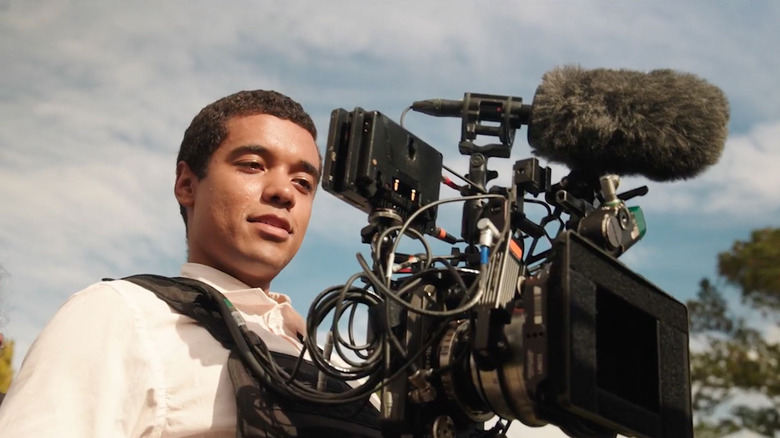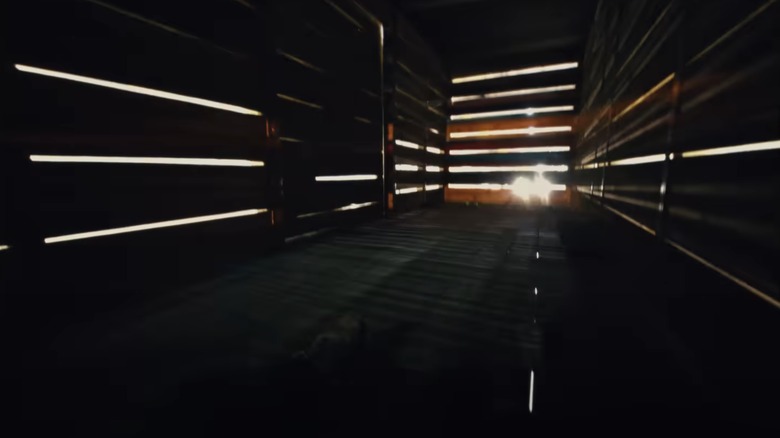When it comes to Oscar nominations, the Academy frequently gets it wrong. I’m not going to waste too much time regurgitating all the ways that awards voters have bungled things, because I think it’s common knowledge at this point that more often than not, the Oscars aren’t really about rewarding the most deserving art of the year. Instead, movies that land nominations (and wins) often do so thanks to heavy campaign work performed by studios and PR folks. Recency bias is also a huge issue — films that are shown to voters at the end of the year tend to get all the glory, while movies released earlier get overlooked. On top of that, anonymous voters will consistently confess that more often than not, they tend to vote for films their friends worked on rather than stuff that’s actually deserving merit. With all that in mind, I try not to let Oscar snubs get me down.
“Nickel Boys,” RaMell Ross’ adaptation of Colson Whitehead’s novel, is hands-down one of the best movies of 2024. And yet, I was fully prepared for the Academy to overlook it, primarily because it really seems like the folks at Amazon MGM Studios have done a poor job promoting the flick. So it was a pleasant surprise to see that the film landed itself a much-deserved Best Picture nomination when the nominees were announced (you can find the full list of nominations here). And yet, “Nickel Boys” was still subject to an egregious snub: it was ignored for a Best Cinematography nomination. Again, I try not to be too perturbed by Oscar snubs. But I have to ask: how the hell could this happen? If any movie from 2024 deserves a Best Cinematography nod, it’s “Nickel Boys.” What cinematographer Jomo Fray does on the film is nothing short of stunning, and the cinematography voting branch of the Academy should frankly be embarrassed to not give Fray a nomination.
Nickel Boys is shot in POV
When it came time to adapt Whitehead’s novel, which is about two young Black teenagers locked up inside a brutal Florida reform school in the 1960s, director RaMell Ross decided to shoot the entire film in POV, similar to a technique he used for his documentary “Hale County This Morning, This Evening.” While some people might consider this approach a gimmick, it works elegantly in “Nickel Boys.” As Ross told EW, “That challenge elevated the imagery and the concept to be even more humanistic.” The end result also feels wholly unique and unlike any movie you’ve seen before. To be clear, “Nickel Boys” isn’t the first film to employ a POV style. The 1947 film noir “Lady in the Lake” is shot in a POV style, as is the silly 2015 action shoot-em-up “Hardcore Henry.” And yet Ross, working with cinematographer Jomo Fray, frequently feels like he’s inventing something new here.
The film gets us accustomed to its style from the jump, showing us the early years of main character Elwood as he grows up in the Jim Crow South. We catch glimpses of Elwood reflected in windows and other objects, but it will be a while before we eventually see his face in full. This happens when the film suddenly switches perspective from Elwood to Turner, another student at the Nickel Academy. Once this happens, “Nickel Boys” frequently cuts back and forth between the two perspectives (while occasionally cutting forward in time and also integrating other types of media, like film clips and website pages). All of this works to put us fully within the headspace of the characters, and to experience the world of the film as they experience it. It never feels like a gimmick, it just feels genuine.
The ‘sentient image’ of Nickel Boys
To achieve the look of the film, the actors frequently had cameras strapped to their bodies. But there was more to creating the film’s POV style than simply pointing and shooting. Speaking with Film Independent, Fray said that when he and Ross talked about the film’s visual style, “it wasn’t a POV as much as it was what we call the ‘sentient image’.” Fray continued:
“It was an image that felt connected to a real body, a real body that had real stakes, and a body who was navigating a community in a system that was naturally hostile to their existence. We wanted the image to be immersive, to be inside of the scene and to even try to get rid of even the layer of dissociation that the audience is traditionally allowed to have with more traditional third person cinema. We wanted to invite the audience into the body of a young black boy navigating the Jim Crow South.”
All of this raised questions about how to pull this off. As Fray put it, “[I]f we’re shooting a sentient perspective, what’s an establishing shot? What’s a cut? What’s a transition? How do you move through space? How do you move through time? Is this a memory? Or is this real life that’s happening to a character and we’re just going between the moments that are most important to them?” In addition to all this, Fray added that “The gaze could never be in front of the action. It was always responding to action.”
All of this could’ve gone horribly wrong, resulting in a film that felt, well, gimmicky. And yet, “Nickel Boys” soars to incredibly heights through the power of its images. To not call attention to that via an Oscar nomination is a huge disappointment. But no matter: despite this oversight, I firmly believe that “Nickel Boys” will remain something important — and groundbreaking. Time will be kind to the film, even if the Academy was not.










